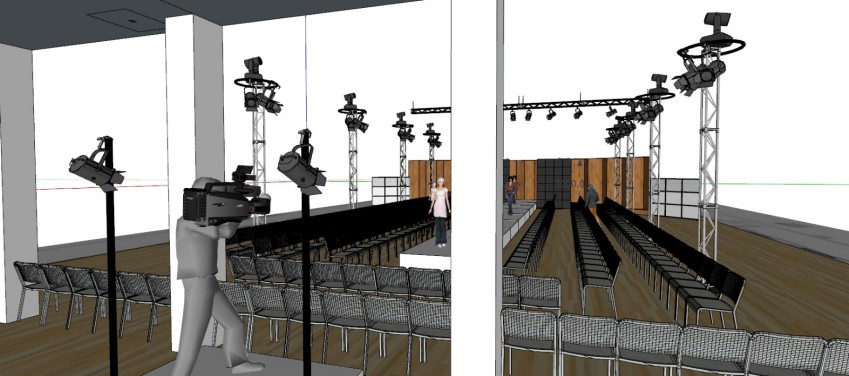We use cookies to make your experience better. To comply with the new e-Privacy directive, we need to ask for your consent to set the cookies. Learn more.
Choosing the Right Runway and Stage Setup for Your Fashion Show

Fashion shows are not only about the stunning garments and designs that grace the runway but also about the captivating experience created by the runway and stage setup. The runway and stage design are pivotal in enhancing your fashion show's theme, aesthetics, and overall impact. Whether you're an established fashion event organizer or a budding designer planning your debut showcase, here's a comprehensive guide to help you choose the right runway and stage setup to leave your audience in awe.
Understand Your Brand and Theme
Before delving into runway and stage specifics, it's crucial to grasp your brand's identity and the show's theme. These elements should be reflected in the design, ensuring that the runway becomes an extension of your creative vision. Be it avant-garde, minimalist, romantic, or futuristic, your runway must embody the essence of your collection.
Consider the Venue
The venue provides a canvas waiting to be transformed. Its architecture, size, and layout shape the runway and stage setup. Incorporating unique venue features like grand staircases or courtyards can elevate the experience and leave a lasting memory.

Runway Layouts
Different runway layouts offer distinct audience experiences. Some popular options include:
- Straight Runway: A versatile choice suitable for various event sizes. The runway's length should align with the venue's dimensions for visual harmony.
- T-Shaped Runway: This layout offers multiple focal points and highlights intricate details from different angles.
- Circular Runway: An immersive choice providing a 360-degree view of models. Careful design is necessary to ensure all attendees have optimal views.
- U-Shaped Runway: Encircling the audience, this layout fosters intimacy and inclusivity.
Stage Setup
The stage setup complements the runway layout and enhances the overall presentation. Key elements to consider include:
- Backdrop: The backdrop sets the show's tone, whether monochromatic, projection-based, or an elaborate set design that resonates with the theme.
- Lighting: Lighting is integral. Experiment with spotlighting, colour washes, and dynamic changes to accentuate outfits and models.
- Props and Decor: Thoughtfully placed props add depth to the show's atmosphere without overshadowing the garments.
- Seating: Prioritize guest comfort and ensure a clear runway view. Innovative seating arrangements can elevate exclusivity.
Technical Considerations
Apart from the aesthetic aspects, technical considerations are essential for a seamless fashion show:
- a) Sound System: A high-quality sound system ensures that the music and commentary can be heard clearly throughout the venue.
- b) Runway Surface: The runway surface should be safe for models to walk on, especially if there are intricate designs, heels, or special effects involved.
- c) Runway Length: The length of the runway affects the show's pacing. Too short, and models may not have enough time to showcase the outfits; too long, and the show might drag on.
- d) Transitions: Models need enough space backstage for quick changes and transitions. Consider the logistics of how models will move on and off the runway smoothly.
Conclusion
In the world of fashion, the runway and stage setup are more than just physical structures – they are an integral part of storytelling and creating a memorable experience. At WWAVE, we transform your fashion show vision into reality with precision and flair. Our tailored design expertise, venue integration, and technical excellence ensure a runway and stage setup that captivates audiences, aligning seamlessly with your brand's identity and theme. With our full-service solutions, your fashion show becomes an unforgettable masterpiece.
